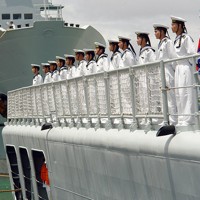SHANGHAI -- Following a period of relatively aggressive behavior from 2009 to 2011, recent events suggest that Beijing is pursuing a new strategy on the region's high seas, perhaps in response to Washington’s Asia pivot. China’s new approach involves asserting sovereignty through civilian actors on a day-to-day basis while adopting a less explicitly abrasive military posture. Going into this week's Association of Southeast Asian Nations (ASEAN) summit, where hopes for agreement on a maritime code of conduct are rising, it seems China would need to radically alter this strategy to participate fully in any such arrangement.
For manifest geostrategic reasons, threat perceptions associated with China's rise have been highly concentrated on the Asian littoral. The rapid escalation of China’s economic activity, naval capability and need for natural resources have introduced new pressures on managing relations in local waters, even as Beijing’s more self-assured stance in international affairs seems to have translated into firmer positioning on the multiple territorial disputes in the region.
While China's relative resilience following the global financial crisis undoubtedly enhanced its status as an international player and underscored its economic leadership in Asia, a series of inflammatory incidents on the Asian littoral between 2009 and 2011 significantly undermined these gains in overall strategic terms. Apart from the notorious claim of sovereignty over the entire South China Sea, Beijing also strained relations with regional players through its unswerving support for North Korea throughout the Cheonan incident, when North Korea allegedly sank a South Korean warship, and the disproportionate escalation of tensions over the Senkaku Islands after Japanese authorities detained a Chinese fishing boat captain.

